The High Line in New York City is no ordinary urban park. It’s a hidden gem, a captivating blend of nature and modern design that defies expectations. From its unique plant life to the striking architectural marvels, every corner of this elevated oasis holds a secret waiting to be discovered. Whether you’re an art enthusiast, a nature lover, or simply someone seeking a peaceful escape from the bustling city, the High Line promises a truly one-of-a-kind experience. What secrets lie in wait along its winding paths? Let’s explore and find out.
Key Points
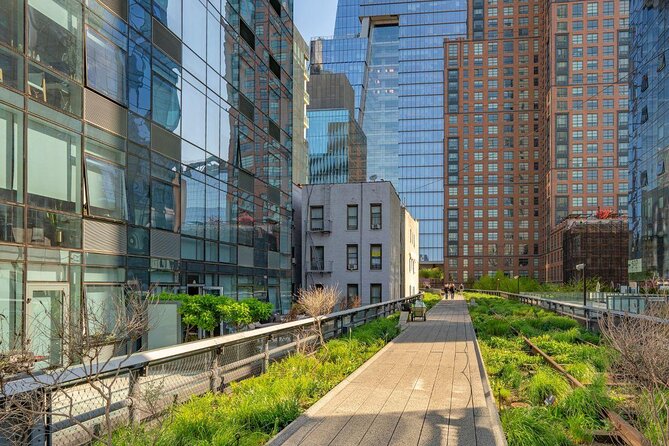
- The High Line’s origins date back to the 1930s as an elevated freight rail line, which fell into disuse and was revitalized through community efforts.
- The park’s unique plant life features over 200 species of perennials, shrubs, and trees, including rare and adaptive species that have reclaimed the abandoned railway.
- The High Line showcases renowned artworks, such as ‘The Orphanage of Lost Antique Fountains’ and ‘Snake Ceiling,’ creating an immersive cultural experience for visitors.
- Innovative architectural structures, including the Chelsea Market Passage, the Spur, and the Plinth, seamlessly integrate nature and urban elements throughout the park.
- The High Line offers a variety of guided tours and self-guided experiences, allowing visitors to explore the park’s hidden gems and gain a deeper appreciation for this urban oasis.
History and Origins
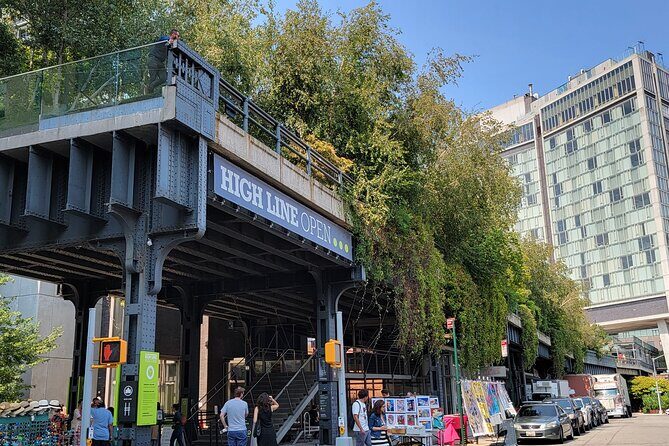
The High Line, an elevated public park in Manhattan’s Chelsea neighborhood, was once an abandoned and dilapidated railway line that’s been transformed into a beloved urban oasis.
The High Line’s origins date back to the 1930s when the elevated rail line was built to transport freight, helping to alleviate dangerous street-level train traffic.
As trucks replaced rail transport, the line fell into disuse and became an eyesore.
In the late 1990s, a community group called Friends of the High Line fought to preserve the structure and reimagine it as a public park.
After years of planning and construction, the first section of the High Line opened to the public in 2009, kickstarting a remarkable urban revitalization.
You can also read our reviews of more tours and experiences in New York City.
Unique Plant Life
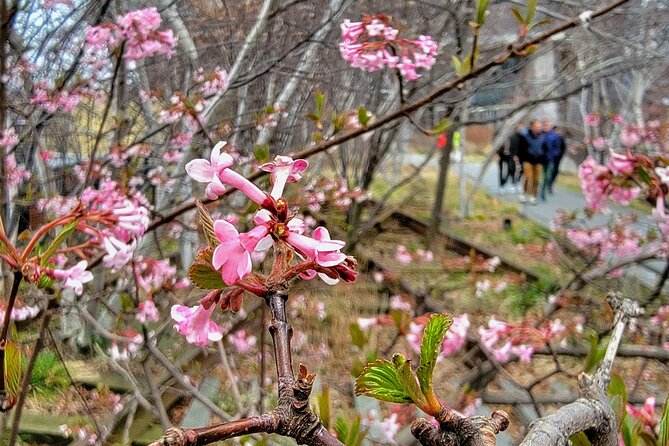
Along with the High Line’s rich history, the park’s unique plant life captivates visitors. Meticulously curated gardens showcase a diverse array of native and adapted species that thrive in the park’s elevated urban environment.
Over 200 species of perennials, shrubs, and trees, many of which are drought-tolerant and able to withstand the park’s challenging growing conditions.
Unusual finds like the Eastern Moss Phlox, a delicate ground cover that bursts into a carpet of purple blooms in the spring.
Adaptive plants that have reclaimed the abandoned railway, such as the hardy Sumac shrub, whose vibrant fall foliage adds a striking visual element.
Carefully chosen ornamental grasses that sway gently in the breeze, creating a calming, nature-inspired atmosphere amidst the bustling city.
Renowned Artworks
Scattered throughout the High Line are numerous renowned artworks that captivate visitors with their unique perspectives and interpretations of the urban landscape. These thought-provoking installations complement the park’s natural beauty, offering an enriching cultural experience for all who explore it.
| Artist | Artwork | Location |
|---|---|---|
| Zaq Landsberg | "The Orphanage of Lost Antique Fountains" | Between 16th and 17th Streets |
| Ai Weiwei | "Snake Ceiling" | Under The Standard, High Line hotel |
| Louise Lawler | "No Drones" | Near the 14th Street Passage |
| Spencer Finch | "The River That Flows Both Ways" | Between 14th and 16th Streets |
| Olafur Eliasson | "The Uncertain Museum" | Along the High Line near 14th Street |
These extraordinary works of art invite visitors to reflect on the interplay between nature, industry, and the human experience within the High Line’s verdant oasis.
Architectural Marvels
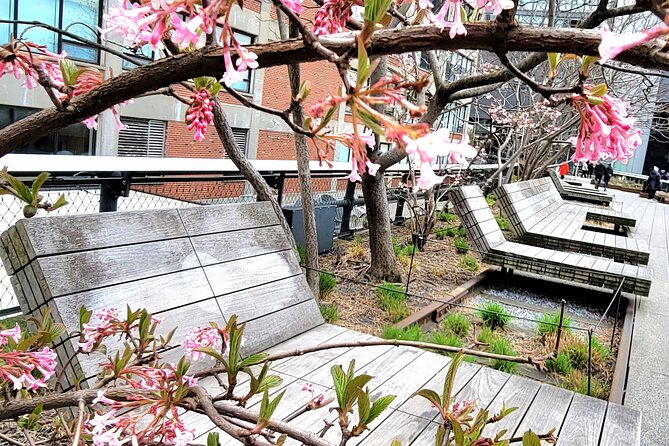
Captivating architectural marvels line the High Line, showcasing the park’s seamless integration of modern design and historic preservation. Innovative structures like the striking glass-encased Standard Hotel and the undulating staircases of the 10th Avenue Square offer visitors a dynamic and immersive experience, complementing the park’s verdant greenery.
The High Line’s architectural wonders include:
-
The Chelsea Market Passage, a sleek and modern pedestrian bridge that connects the High Line to the bustling Chelsea Market.
-
The Spur, a dramatic cantilever that extends the park over 10th Avenue, providing unparalleled city views.
-
The Plinth, a unique platform that hosts rotating art installations and public events.
-
The Gansevoort Woodland, a lush, forested section that blends naturalistic elements with striking architectural forms.
Visitor Experiences
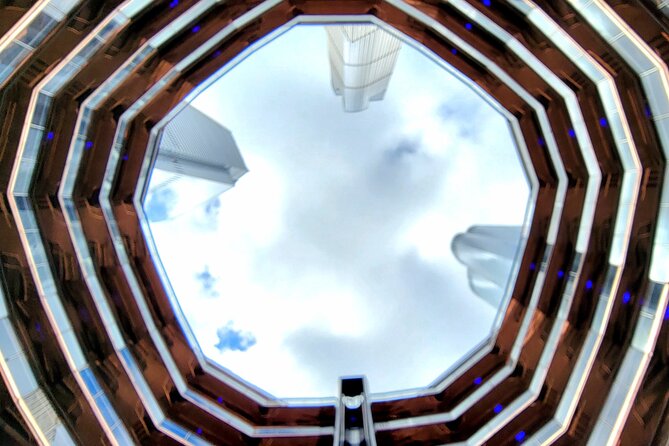
The High Line offers visitors a truly immersive and multifaceted experience, allowing them to explore the park’s intricate blend of horticulture, art, and architectural marvels.
The 2-hour guided tour takes participants on a captivating journey, starting with a stroll through the vibrant Chelsea Market before ascending the elevated walkway. Along the way, visitors learn about the park’s remarkable history and witness the seamless integration of nature and urban elements.
The tour caters to a small group, ensuring a personalized and engaging experience. Whether marveling at the striking vistas or discovering hidden gems, visitors are left with a deeper appreciation for this unique green oasis in the heart of New York City.
- 9/11 Memorial, Ground Zero Tour With Optional 9/11 Museum Ticket
- 9/11 Memorial Museum Admission Ticket
- All-Access 9/11: Ground Zero Tour, Memorial and Museum, One World Observatory
- New York Catacombs by Candlelight
- New York in One Day Guided Sightseeing Tour
- Official NYC Horse Carriage Rides in Central Park Since 1979 ™
Getting to the High Line
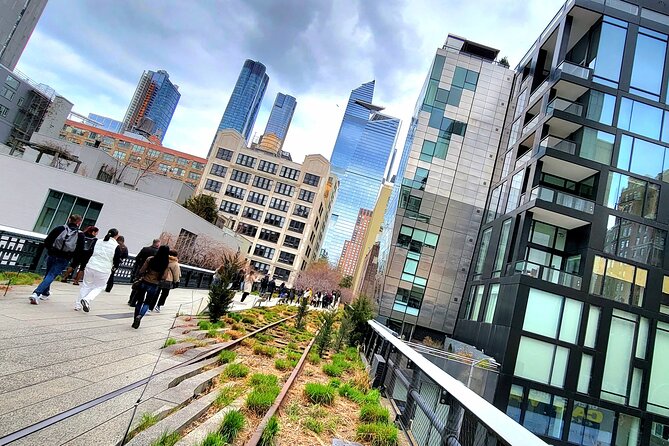
Conveniently located in the heart of Manhattan, the High Line offers visitors several transportation options to access this unique elevated park.
Visitors can easily reach the High Line via public transportation, with various subway and bus lines nearby. Alternatively, those driving can find parking in the surrounding area, though availability may be limited.
The park’s accessibility is further enhanced by:
- The 14th Street entrance, just a few blocks from the A/C/E/L subway lines.
- The 16th Street entrance, close to the 1/2/3 subway stations.
- The 23rd Street entrance, near the C/E lines.
- The 30th Street entrance, with the nearby 7 train providing easy access.
Whether on foot, by subway, or by car, the High Line is readily accessible to all who wish to explore its captivating sights.
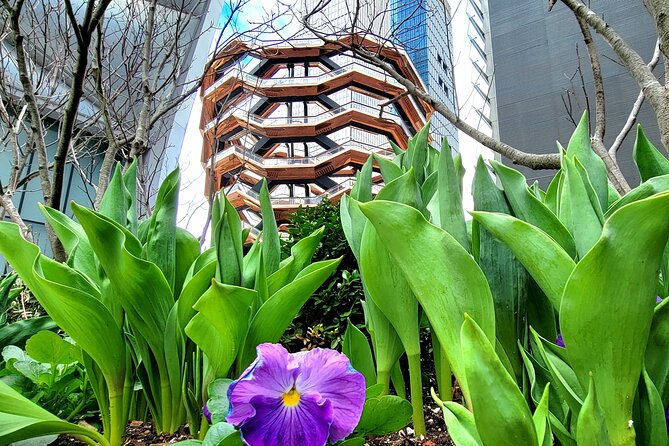
Upon entering the High Line, visitors will find themselves immersed in a well-designed pedestrian experience that seamlessly guides them through the park’s elevated pathways.
From the various entry points, wayfinding signage and maps help orientate guests, ensuring they can navigate the park’s meandering routes with ease.
As they stroll, visitors will discover a variety of seating options, from benches to lounge chairs, providing ample opportunities to rest and take in the city views.
The park’s accessibility features, such as elevators and ramps, make it easy for all to explore the High Line’s unique vantage point above the bustling streets below.
With thoughtful design at every turn, the High Line invites visitors to discover its hidden gems at their own pace.
Practical Tips
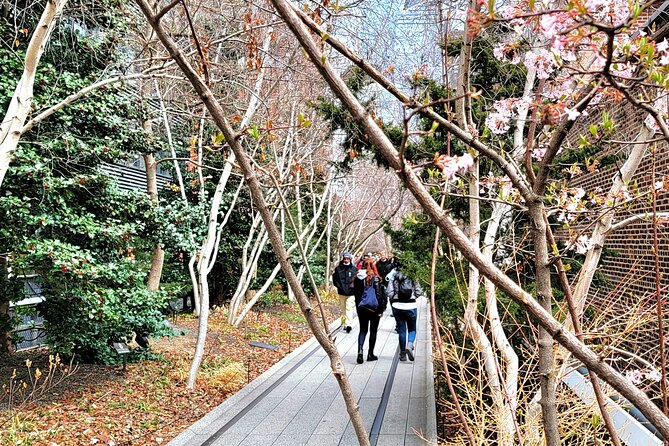
With the High Line’s thoughtful design and wayfinding in place, visitors can now focus on some practical tips to make the most of their experience. Packing light and wearing comfortable shoes is key, as the park’s winding paths require a moderate amount of walking to fully explore.
Plus, being mindful of the park’s operating hours and weather conditions can help ensure a seamless visit.
Bring water and snacks, as there are limited food options along the way.
Consider using the park’s multiple entry/exit points to avoid backtracking.
Familiarize yourself with the High Line map to plan your route.
Be prepared to share the space with other visitors, as it can get crowded during peak times.
Frequently Asked Questions
Is the Tour Accessible for People With Disabilities?
The tour is wheelchair accessible, but it’s not recommended for children under 12 or those with physical limitations. The tour involves a moderate amount of walking, about 1.5 miles.
Can I Bring My Own Food and Drinks on the Tour?
Yes, guests can bring their own beverages and snacks on the tour, though they must be purchased prior to the start. The tour does not schedule formal restroom breaks, but guests can consume their own food and drinks during the tour.
What Is the Minimum Number of Guests Required for the Tour?
The tour requires a minimum number of guests, though the exact number is not specified. The small-group nature of the tour provides a more personalized experience for participants.
How Long Is the Walking Distance During the Tour?
The tour involves a moderate amount of walking, covering approximately 1.5 miles along the entire length of the High Line Park. The tour is not recommended for those with physical limitations or children under 12.
Is the Tour Suitable for Children Under 12 Years Old?
The tour is not recommended for children under 12 years old or those with physical limitations, as it involves a moderate amount of walking, approximately 1.5 miles. The tour may not be suitable for younger children due to the pace and distance.
Recap
The High Line’s transformation from an abandoned railway to a thriving public park is a remarkable feat.
Visitors are captivated by the diverse plant life, renowned artworks, and striking architectural features.
This urban oasis in the heart of New York City showcases the power of urban revitalization and the integration of nature and the built environment, making it a must-visit destination.
More Tour Reviews in New York City
Not for you? Here's more things to do in New York City we have recnetly reviewed
- 3 Best Craft Beer Tours And Tastings In New York City
- 16 Best 2 Day Tours In New York City
- 15 Best 3 Day Tours In New York City
- 25 Best Cruises And Boat Tours In New York City
- 20 Best Christmas Experiences In New York City
- 25 Best Dining Experiences In New York City
- 15 Best Full-Day Tours In New York City
- 25 Best Helicopter Flights And Tours In New York City
- 2 Best Jet-Ski Experiences In New York City
- 4 Best 4 Day Tours In New York City
- 3 Best Coffee Tours And Tastings In New York City
- 20 Best Photography Experiences In New York City
